Dusty zenobia (
Zenobia pulverulenta) is a small Southeast native shrub with several appealing traits: fragrant flowers, reddish twigs, bluish leaves and great autumn color. It has a graceful form with open branching and attractive peeling bark on mature branches. Dusty zenobia is underused in the landscape, but it makes a great addition to wet, shady gardens in the Southeast.
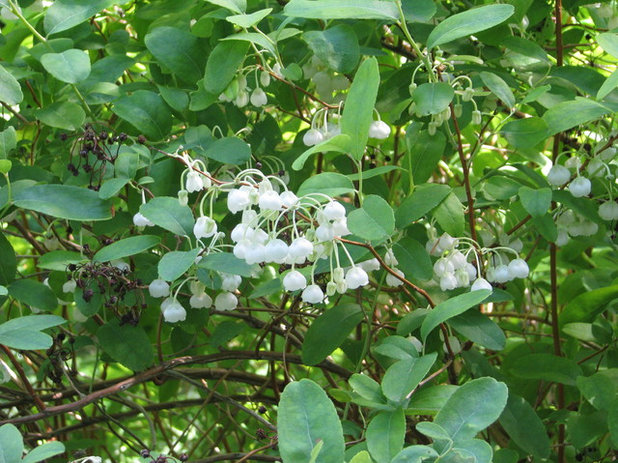 Photo by peganumBotanical name: Zenobia pulverulentaCommon names:
Photo by peganumBotanical name: Zenobia pulverulentaCommon names: Dusty zenobia, honeycup
Origin: Native to the Southeast U.S., primarily Alabama, Georgia, North and South Carolina, and Virginia
Where it will grow: Hardy to 0 degrees Fahrenheit, or minus 17.8 degrees Celsius (USDA zones 7 to 9; find your zone)
Water requirement: High; requires acidic soil; does well in wet and damp soils
Light requirement: Part shade
Mature size: 3 to 6 feet tall and 3 to 4 feet wide
Benefits and tolerances: Grows slowly; tolerates wet soils and acidic woodland soils; has fragrant, showy flowers
Seasonal interest: White flowers in summer; red to purple autumn color
When to plant: Can be transplanted easily by layering in spring; transplant from containers in autumn
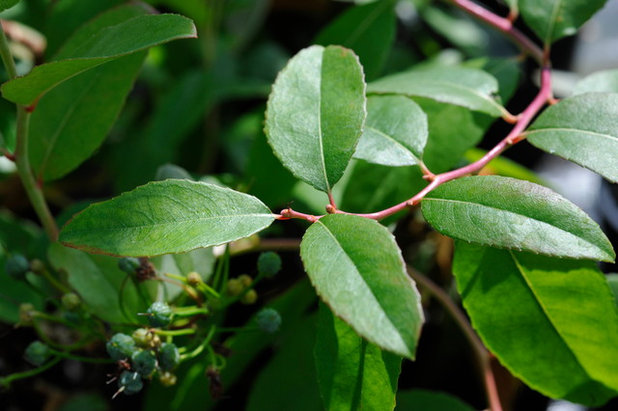 The reddish color of the twigs is more pronounced in Zenobia pulverulenta ‘Raspberry’ than in the straight species. Photo by Megan Hansen
The reddish color of the twigs is more pronounced in Zenobia pulverulenta ‘Raspberry’ than in the straight species. Photo by Megan Hansen
Distinguishing traits. Dusty zenobia is a medium shrub with an open, spreading growth habit. It’s semievergreen, with leaves remaining through winter in the warmer parts of its range. Expect Zone 7 gardens to have leaf drop with this species.
Dusty zenobia’s most distinguishing trait is its flowers. Clusters of fragrant, bell-shaped white blooms appear on this plant in May and June.
Other distinguishing characteristics include a red to purple autumn leaf color, reddish twigs and waxy, oblong leaves.
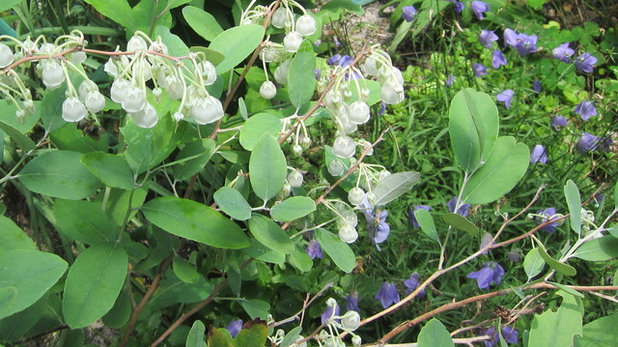 Photo by K M
Photo by K M
How to use it. A native of the Southeast woodlands, dusty zenobia is at home in the woodland garden or naturalized in clumps on damp sites. A single large specimen could be used in a spot with bright morning sun to boost the proliferation of fragrant white blooms in early summer. Other uses include mixing it into a shade garden border or using it as a slow-growing plant at the edge of a water garden.
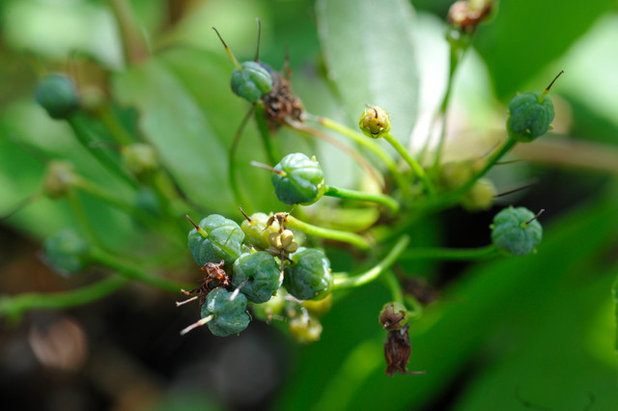 Photo by Megan HansenPlanting notes.
Photo by Megan HansenPlanting notes. Dusty zenobia grows slowly, so don’t be dismayed if it takes a while to reach maturity. Be wary of overpruning in the spring because blooms occur on the previous year’s growth. Instead, prune in autumn after the plant has bloomed.
Dusty zenobia is in the heath, or Ericaceae, family, meaning that it’s related to blueberries, azaleas, camellias and heathers, though it’s not as popular. Dusty zenobia does well in similar soil — a moist, well-draining, peaty or sandy mix — and can be used as a smaller shrub among larger azaleas and blueberries in wetter areas.
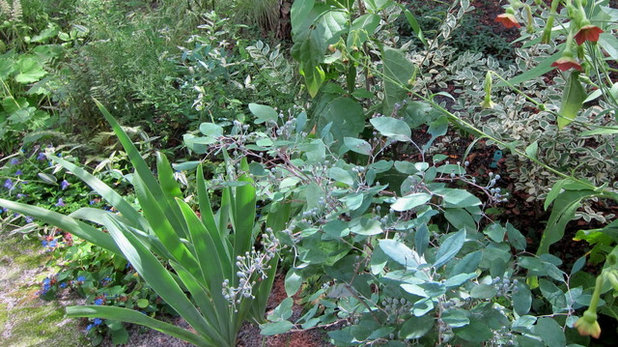 Photo by K MCultivars.
Photo by K MCultivars. - Z. pulverulenta ‘Woodlander’s Blue’ is the most common cultivar. The leaves start out green when they first emerge and then transition to blue and bluish gray. The blue cultivar is shown here planted with irises and other water-loving plants.
- Z. pulverulenta ‘Raspberry’ has showy pink flowers and redder twigs than the straight species.
The autumn leaf color for both cultivars is yellow to yellow-orange instead of the red to reddish-purple autumn color of the straight species.





